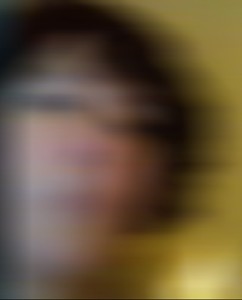THIS 4TH PART IS CURRENTLY UNDER REVISION AND WILL BE REPLACED BECAUSE BEING REPETITIVE IN PARTS WITH RESPECT OF PREVIOUS 3RD PART. FINAL PARTS ALSO TO BE REVISED Continue reading

THIS 4TH PART IS CURRENTLY UNDER REVISION AND WILL BE REPLACED BECAUSE BEING REPETITIVE IN PARTS WITH RESPECT OF PREVIOUS 3RD PART. FINAL PARTS ALSO TO BE REVISED Continue reading
I have just come across a site that I had not previously encountered, which holds the archives for all of the past 31 volumes of the Indian Philosopical Quarterly. Unfortunately, you can only select by volume initially, but you are then presented with an index of the articles and selecting one displays a PDF version, which can be read on-line or downloaded.
There is obviously a wide variety of topics, (I came across it while researching for my next book on the Mandukya Upanishad and Gaudapada kArikA-s). and the style is predominantly academic. But there is interesting material to be found! How about one which claims that the Self is located in the embryo part of the brain?! (Volume 18, No. 4 – ‘Inner Self Located’) (Note that J. A. I. Bewaji, in Volume 20, No. 3 says: “This conclusion is simply ridiculous”.)
“Hello!”
“Hello!”
“Is Dr. Singh there?”
“Sure, he is.”
“Is he not in New York?”
“Certainly not.”
Not in London either?”
“No, he is definitely here in Delhi.”
“Is he sleeping?”
“What?! ……. Sleeping? ……. No, he is in his office and very much awake.”
Dr. Singh’s Assistant, though a bit bewildered, sounded very confident in his replies. But I remained unconvinced.
If the probability of Dr. Singh being in New York is zero, and his being present in Delhi is one hundred percent, there must be some probability of his being in London in-between! Further, his Assistant asserts that Dr. Singh is awake. How does he know Singh’s state so definitely without actually seeing him? Don’t think that I lost my wits or I am an over the top Vedantin.
 In the previous article, I had said that īśvara and jīva have to be understood in their entirety in order for us to understand the mahāvākya, tat tvaṁ asi. Over the next few articles, we will attempt to have a fuller understanding of who īśvara really is.
In the previous article, I had said that īśvara and jīva have to be understood in their entirety in order for us to understand the mahāvākya, tat tvaṁ asi. Over the next few articles, we will attempt to have a fuller understanding of who īśvara really is.
The most important understanding of īśvara is his dimension of being the abhinna nimmitta upādāna jagat kāraṇam. Its means the one who is the non-different intelligent and material cause of the jagat. Continue reading
Q: While I’m drawn to the apparent peace that sages such as Ramana Maharshi seemed to enjoy, I feel I’m failing to grasp something.
Advaita seems, sometimes, to be totally nihilistic and bleak (although I accept that this would not constitute an argument against its veracity).
It’s all very well to say that the ‘self’ can’t die but this seems (from my perhaps benighted viewpoint) to be playing with semantics.
If, with ‘my’ death, comes only oblivion such as in deepest sleep /anaesthesia, where is the comfort or meaning in this knowledge? The end of my small ‘I’ would seem to be, in effect, the end of everything since, without my consciousness to perceive it, how can anything be said to exist?
Does one take comfort from the fact that other apparent ‘I’s continue to experience within the one reality? It may be that my existence is only apparent and that, whether it is followed by oblivion is irrelevant – but it doesn’t feel like that from where I’m sitting! Continue reading
 In the first part of this enquiry we saw how, by discriminating between the seer and what’s seen, we arrive at the understanding that ‘I’, the seer, am not the body, not the sense powers, not the thinking faculty, not even a combination of all of them. They are all objects of my perception and I am the perceiving subject. And I, the subject, cannot be what I can perceive as an object. In this logical way we arrived, step-by-step, at a final ‘knower’, which is given the name ‘pure consciousness’. This pure consciousness is what remains after thoughts, (which are the subtlest objects of perception), have been dismissed as the ultimate ‘I’. We know there’s something there but it is still a bit hazy. We now need to test the robustness of our new working conclusion that this ‘pure consciousness’ is the ‘I’ we are searching for and sharpen the understanding.
In the first part of this enquiry we saw how, by discriminating between the seer and what’s seen, we arrive at the understanding that ‘I’, the seer, am not the body, not the sense powers, not the thinking faculty, not even a combination of all of them. They are all objects of my perception and I am the perceiving subject. And I, the subject, cannot be what I can perceive as an object. In this logical way we arrived, step-by-step, at a final ‘knower’, which is given the name ‘pure consciousness’. This pure consciousness is what remains after thoughts, (which are the subtlest objects of perception), have been dismissed as the ultimate ‘I’. We know there’s something there but it is still a bit hazy. We now need to test the robustness of our new working conclusion that this ‘pure consciousness’ is the ‘I’ we are searching for and sharpen the understanding.
For this we need to understand the nature of consciousness and its relationship, if any, with ‘I’. A question might arise at this point: If ‘I’ is the pure consciousness that remains in the absence of vṛtti-s (thoughts), and no cognition is possible without vṛtti-s, then how can I ever know what I am? How do we go further with this enquiry if there are no thoughts? Continue reading
This Post responds to the Comments of 18th April made by Suka.
(Suka’s Comment in blue and my response in black).
S: Mithya is defined as sadasadbhyām vilakṣaṇam – meaning it cannot be categorically classified as truth or false. Mithya is vyāvahārika, experientially efficient, substantially unreal.
R: vyAvahArika and prAtibhAsika fall under mithya. Both vyAvahArika and prAtibhAsika are experienced in their respective spheres, and both derive their reality based on the Reality of the immutable substratum. Dr. Mani Dravid Shastri also suggests in his lectures on adhyAsabhAshya that, “mithya can be divided into two categories, namely vyAvahArika or empirical and prAtibhAsika or illusory.”
S: The argument tat pot is an illusion does not hold water, because pot does hold water.
R: “Holding water” too is as much an illusion as pot or water!!
This Post is once again in continuation to the discussions on my earlier Posts.
I shall try to answer the questions and clarify on some of the conceptual issues raised by our esteemed Colleague Suka in his Comments of the 15th of April.
That we have to necessarily use words to express ourselves is pretty obvious. But the words come with their own baggage especially when we use them in contexts that are non-quotidian and are hence liable to be understood or misunderstood in unintended terms. Therefore, it looks to me that I should begin with clarifying the meaning of some of the words, and many a time, this by itself, will have the potential to resolve some of the pending confusion.
Suka observed, inter alia, in his comments of the 15th April:
I) “Traditionalists (do not) consider neither māṇḍūkya bhāṣya nor vivekacūḍāmaṇi as authentic works of śaṅkara for this very reason.” [I guess “do not” is a typo.] Continue reading
If our valued Readers are interested, I propose to start a New Series of Posts on some of the latest Scientific advances that could be of interest to our Community of Advaita Thinkers and Philosophers. These Posts will be infrequent and in the form of simple “Alerts” on the current research findings. What gets reported by me will obviously be constrained by at least two of my own limitations:
(i) The conscious and or unconscious ‘filtering mechanism’ exercised by my mind in selection of the topics; and
(ii) What research papers happen to come to my notice.
For the present, here is a sample Post to show how I propose to structure this venture taking selections from the works published during the last couple of weeks:
[If Dennis agrees and if there is sufficient interest, we may continue and improve upon this idea. Readers may like to send their views to Dennis (in confidence, if desired).] Continue reading
Part 10 of the serialization of the presentation (compiled by R. B. Athreya from the lectures given by Swami Paramarthananda) of upadesha sAhasrI. This is the prakaraNa grantha which is agreed by most experts to have been written by Shankara himself and is an elaborate unfoldment of the essence of Advaita.
Subscribers to Advaita Vision are also offered special rates on the journal and on books published by Tattvaloka. See the full introduction and part 1 of the new series.